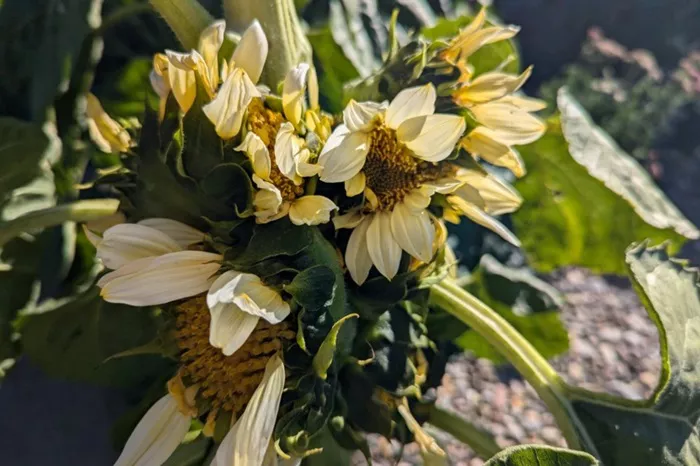As harvest season arrives, local news outlets often feature quirky images of deformed vegetables. However, 2024 has introduced a fresh twist with strange sunflowers and an unusual gourd.
Earlier this month, Sudbury.com reported on Melanie Lalonde, a resident of Sudbury who has cultivated a sunflower garden in front of her Eyre Street home for several years. This year, one of her sunflowers exhibited a fascinating conjoined head.
“I create a sunflower garden every year at the 5plex I live in,” Lalonde shared. “This year, a very unique sunflower bloomed.”
By “unique,” she referred to the sunflower’s conjoined flower head, which resulted from two flowers sprouting from a single stalk. This unusual growth phenomenon is known as fasciation, according to the gardening website Birds&Blooms.
Gardening expert Melinda Myers explained that fasciation, while rare, is not uncommon. It can occur in various plants. “I often receive calls from gardeners who notice this on lilies, cockscombs, dandelions, asparagus, and succulents,” Myers stated. “The conjoined flowers arise from a hormonal imbalance, genetic mutation, or environmental factors.”
Another reader, Donna Leclair, shared her own experience with an unusual sunflower. “I had one with six heads and two more on the way,” she told. “It’s dead now, but I had never seen anything like it before.”
Lalonde’s peculiar sunflower prompted a response from Ranjani, a reader from Lethbridge, Alberta, who shared an image of their own conjoined sunflower.
Another Sudbury reader, Dee Ho, also contributed to the conversation, sharing her gardening experience. “In my cozy garden, I find joy in nurturing seeds as they grow into flowers and produce fruit,” Ho explained. She reminisced about the wintermelons her father used to grow, which brought back memories of family gatherings and homemade soup.
This summer, Ho decided to revive the tradition by planting wintermelons and bottle gourds. These gourds, known by various names such as Calabash and birdhouse gourd, have been cultivated in China and Japan for thousands of years. When young, they are edible, but when mature, they can be dried and repurposed as containers or instruments.
As her garden flourished, Ho noticed some unusual results. “The garden thrived, with many flowers, but few fruits matured. Most wintermelons remained small, and the baby bottle gourds rotted,” she said.
However, one wintermelon grew remarkably large, exceeding 15 inches in length. Its color and texture appeared normal, but its shape, resembling a mix with a nearby bottle gourd, puzzled her.
“Is it a result of pollination, poor soil, or just how some wintermelons are? I wonder about its taste and what it looks like inside. For now, I’m content to let it grow until the end of summer,” she concluded.
Related topics:


